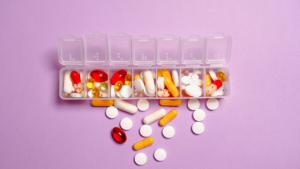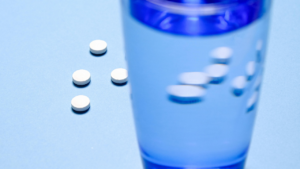You probably have some idea of how dangerous it is to make meth. The show “Breaking Bad” certainly showed this process to millions of Americans for the first time. However, unlike in that program, a lot of meth isn’t made safely in a gleaming, state-of-the-art laboratory. Instead, it’s made cheaply—and in dangerous conditions.
Here’s a rundown of some of the steps that go into making meth—and why making methamphetamine is as dangerous, if not more so, than actually taking meth.
Do you need meth addiction treatment? To find out, call us today at 330.919.9228.
How Is Meth Made?
Down-and-dirty meth cooks make their product by extracting ephedrine or pseudoephedrine from cold medications or diet pills for which they form the active ingredient. If you pronounce “pseudoephedrine” out loud, you may notice its similarity to the popular cold medication Sudafed. That’s because the active ingredient in Sudafed is pseudoephedrine. You used to be able to purchase this key ingredient in the production of methamphetamine over the counter at any drugstore. Its popularity in meth cooking has led many drug stores to restrict the purchase of Sudafed and related medications.
Once the ephedrine or pseudoephedrine is extracted, the cook then mixes it with water and a combination of compounds, including lithium, ammonia, red phosphorous, or crystallized iodine. Nearly all of these ingredients can be obtained at a drugstore, grocery store, or hardware store.
When mixed with a solvent and heated, the ingredients crystalize into solid “crystal meth,” the most popular form of the drug sold on the street, which can be snorted, smoked, injected, taken orally, or dissolved in water and drank.
Ingredients Used To Make Meth
- Ephedrine or Pseudoephedrine: Found in over-the-counter cold medications and diet aids. These compounds can relieve cold symptoms and suppress the appetite, but can also have negative effects on the nervous and cardiovascular system.
- Acetone: A key ingredient in many brands of nail polish remover and paint thinner. Highly flammable.
- Hydrochloric Acid or Sulfuric Acid: Purchased pure or extracted from drain cleaners. Highly caustic, these acids can cause severe chemical burns.
- Iodine: Available at any drug store. Commonly used to disinfect wounds.
- Lithium: Found in many kinds of batteries, including car batteries. Also found in certain strong psychiatric medications.
- Lye (sodium hydroxide): A corrosive ingredient found in certain strong soaps and industrial cleaning products. When mixed with water it can cause severe chemical burns.
- Phosphorus: Highly combustible, found on the tips of matches.
- Toluene: An ingredient of brake fluid.
Meth producers might also use gasoline, ether, chloroform, battery acid, Freon, and Red Bull Energy Drink in their cook. If none of this sounds very appetizing, it should just serve to underline that meth is a dangerous drug, made from a host of ingredients you would never want in your body.
The Risks Of Making Meth
Making crystal methamphetamine is extremely dangerous. It can easily endanger the property it is being cooked on, the life of the cook, and the health of anyone nearby. The materials used in meth are highly flammable, caustic, and corrosive. Explosions or house fires are depressingly common with DIY meth labs. Touching corrosive materials can cause severe burns and leave nasty scars. When mixed together or mixed with water, the chemical reactions produce further corrosive effects.
Heating or mixing the reactants can create toxic fumes, potentially causing blindness. They can also burn the mucous membranes inside your lungs and throat. If the body absorbs the chemicals found in the vapors, it could lead to permanent organ damage.
Meth Labs Damage Property And The Environment
Even if it does not explode or burn down, meth labs may cause permanent damage to the buildings that house them. Toxins sink into the carpets, walls, curtains, and floor surfaces of the home. As a result, the odors causes headaches long after cooks dismantle theirs labs. Cooking meth results in hazardous byproducts, which cooks typically dump into the environment with little regard to the damage they are doing. Meth byproducts also cause damage to national parks.
The Dangers of Using Meth
Meth is a dangerous drug that can have devastating effects on the user. Meth can cause brain damage, heart problems, and death. This drug is also very addictive, and users can quickly become addicted to the drug.
Meth is also very dangerous to unborn children. Pregnant women who use meth can give birth to babies with birth defects, including heart problems, brain damage, and cleft palates.
Meth users often experience a number of symptoms, including:
- Increased energy
- Increased talking
- Sweating
- Dilated pupils
- Increased respiration
- Tremors
- Headaches
- Nausea
- Vomiting
- Anxiety
- Paranoia
- Auditory hallucinations
- Psychotic symptoms
If you or someone you know is using meth, it is important to get help immediately. There are a number of treatments available for meth addiction, and with treatment, most users can recover from their addiction.
Treating Meth Addiction At The Bluffs
If you suspect a meth lab exists in your area, notify the police immediately before it can cause injury, death, and destruction of property. Reach out to The Bluffs for details on how to address signs of meth addiction today.








